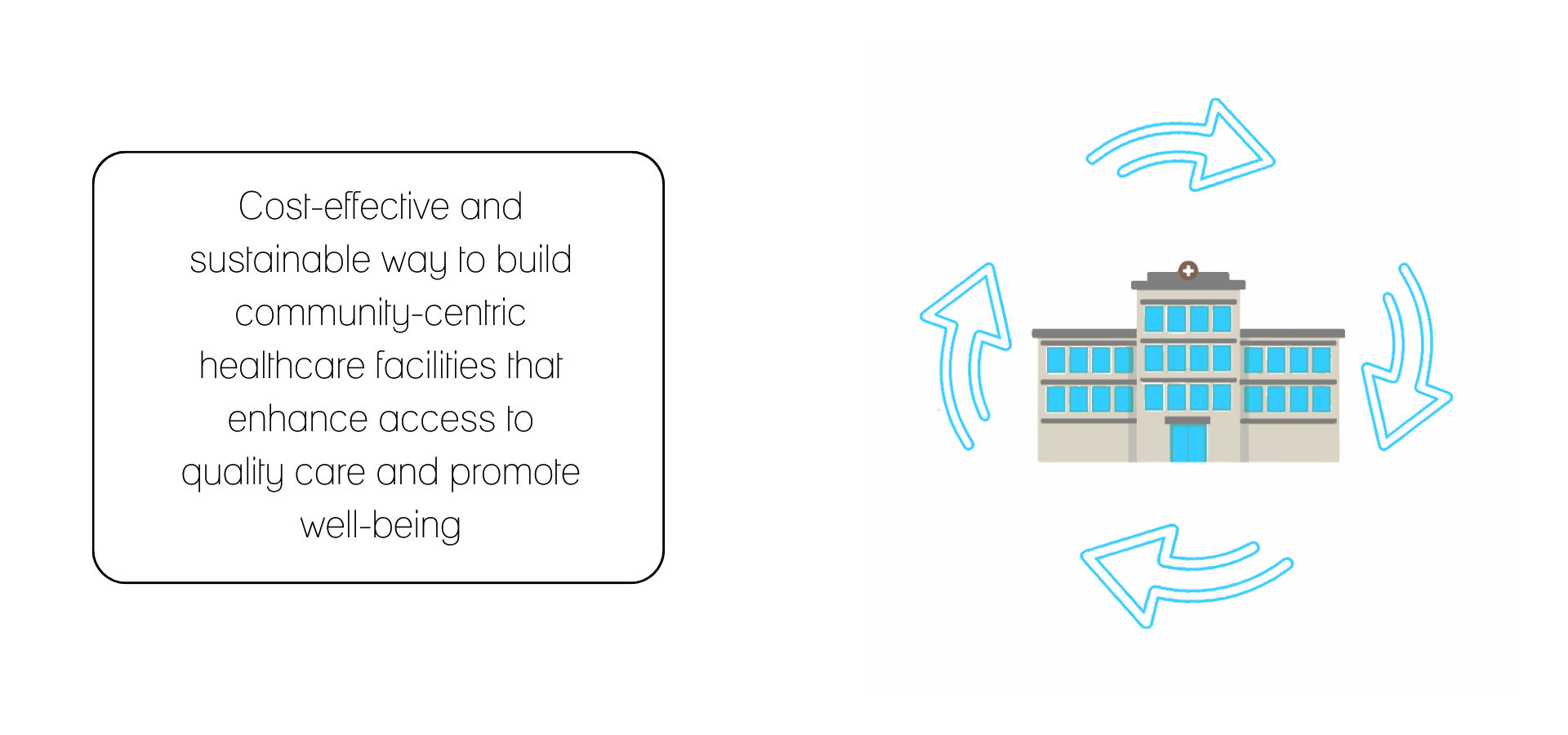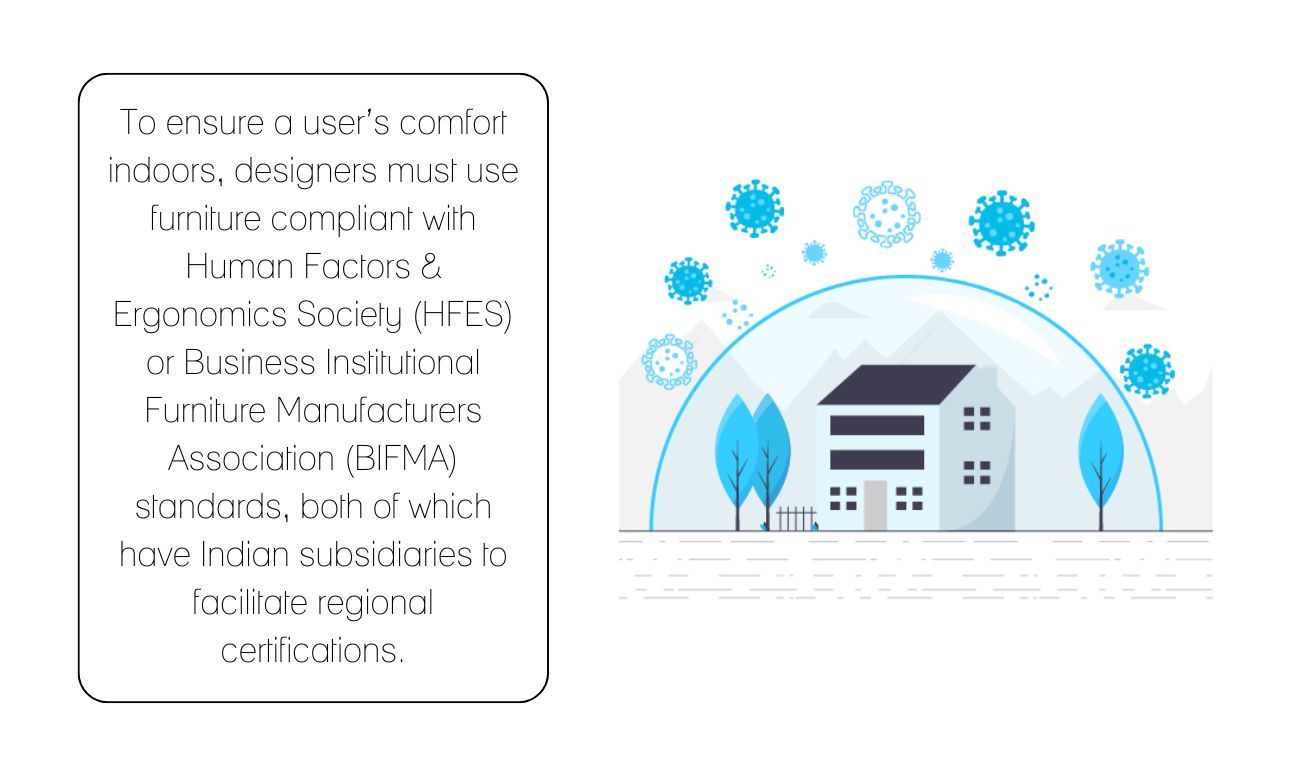

30-10-2023
Reimagining Healthcare Architecture Ravideep Singh

5 Ways Adaptive Reuse is Shaping Modern Buildings
Today, health systems in India are grappling with acutely increasing costs of setting up the infrastructure with equipment and deficient land to build hospitals that meet the needs of the people. In this seemingly paradoxical milieu, adaptive reuse is a transformative concept that repurposes existing buildings or structures for new functions rather than tearing them down and building anew.
In the realm of healthcare architecture, adaptive reuse has become an innovative approach to shaping modern healthcare facilities. In urban areas where land is scarce and expensive, repurposing existing infrastructure offers a sustainable solution to meet the growing demand for healthcare facilities. This also provides a unique opportunity to improve healthcare accessibility by transforming urban structures into hospitals. This approach is a cost-effective and sustainable way to build community-centric healthcare facilities that enhance access to quality care and promote well-being. Let’s look at five reasons to adopt adaptive reuse.
-
Sustainability: Reusing existing structures reduces the environmental impact of construction by minimising the need for new materials and energy consumption. Retrofitting a building with energy-efficient technologies, such as HVAC systems, lighting, and insulation, can significantly reduce energy consumption.
-
Adaptability to Modern Needs: Healthcare services and practices are evolving, and adaptive reuse provides an opportunity to tailor facilities to meet current demands. Older buildings can be transformed to accommodate advanced medical equipment, telehealth services, patient-centred care models, and technology integration. The flexibility of adaptive reuse enables healthcare facilities to evolve with the ever-changing healthcare landscape.
-
Faster Timelines: One of the benefits of repurposing is the shorter construction timeline as opposed to building a new structure from scratch. To accelerate the execution time, design elements like the patient room headwalls, footwalls, and wall claddings can be standardised, and drywall construction, adhesive finishing technology, and pre-designed systems such as PVC panels and wall coverings are also known to expedite processes further.
Sarvodaya Hospital, Greater Noida
-
Cost Efficiency: Adaptive reuse is often more cost-effective than constructing new buildings from scratch. Retrofitting and renovating an existing structure can save substantial amounts of money, especially when considering the high costs associated with healthcare construction. This cost efficiency allows healthcare organisations to allocate resources to other critical areas, such as advanced medical equipment and patient care. Many challenges arise, particularly concerning mechanical services and their specific height requirements inherent in brownfield projects. Ingeniously, implementing ducted cassette units can be a space-efficient alternative to optimise heights and enhance the overall spatial experience within the hospital. This approach is a cost-effective and sustainable way to help cut down on construction time and build community-centric healthcare facilities that improve access to quality care and promote well-being.
Sarvodaya hospital , Greater Noida
-
Community Integration: Repurposing an existing building for healthcare use often means that the facility is located within established communities. This can enhance accessibility for patients and staff and strengthen the facility's ties to the surrounding neighbourhood. Adaptive reuse projects can spark community engagement and serve as landmarks that contribute positively to the area's identity.
The future of adaptive reuse in healthcare infrastructure
The adaptive re-use of brownfield sites for modern hospitals is a promising approach, but it comes with essential caveats that architects and healthcare providers must consider. A thorough site analysis is paramount to ensure safety, compliance with healthcare standards, and alignment with the facility's vision for care delivery and service offerings. The inherent flexibility of the hospital's life cycle should also be envisaged, accounting for the dynamic nature of healthcare. This ensures that the facility can adapt to changes in care models, technological advances, and future expansion needs. Careful planning and a holistic strategy are essential to create sustainable and effective modern hospitals through adaptive re-use of defunct infrastructures.
Globally speaking, healthcare systems are slowly nudging towards diminishing, reduced out-of-pocket spending, and increasing reliance on insurance and state-funded schemes such as Ayushman Bharat Yojna etc. This realm has reckoned health systems to be exceedingly frugal, ensuring even higher degrees of patient care and experience. Such a perspective has actuated an ever-evolving gamut of healthcare infrastructure synonymous primarily with green field projects. Nevertheless, brownfield adaptive reuse projects will remain a reasonable alternative depending on how well they align with the project goals and vision.











